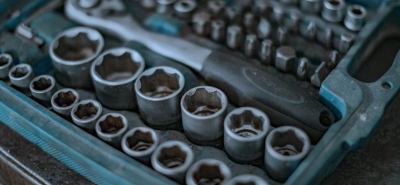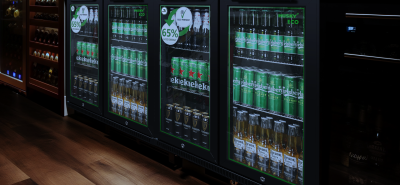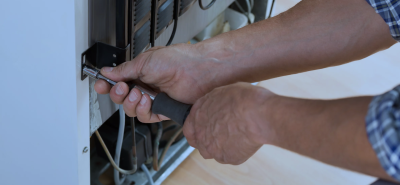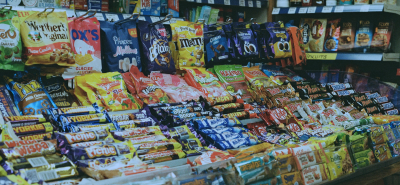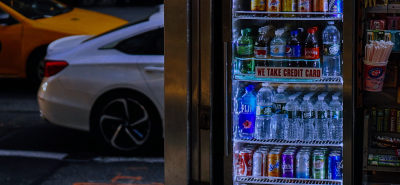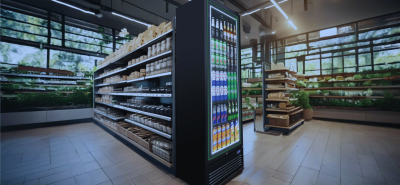Common Issues and Troubleshooting Guide for Commercial Fridges
Commercial fridges are essential for businesses that require consistent and reliable refrigeration, such as restaurants, pubs, convenience stores, and catering services. A faulty fridge can lead to spoiled food, disrupted operations, and increased costs, making it crucial to address any issues promptly. Make sure you are maintaining your commercial fridge properly. This article will guide you through troubleshooting for commercial fridges, helping you maintain efficiency and ensure the longevity of your equipment.
Fridge Won’t Cool
Possible Causes
- Dirty condenser coils
- Faulty evaporator fan
- Faulty controller
- Refrigerant leak
- Blocked air vents
Troubleshooting Steps:
- Clean the condenser coils: Dust and dirt can accumulate on the coils, reducing their ability to dissipate heat. Clean the coils with a vacuum or a brush to improve cooling efficiency.
- Check the evaporator fan: If the fan is not running, it may be blocked or need to be replaced. The fan is crucial for circulating cold air throughout the fridge. Check to ensure there is no obstruction or ice build up affecting the fans operation.
- Test the controller: A faulty controller may not properly regulate the temperature. Firstly, check if the target temperature is set correctly. Then, if the fridge is out of warranty, check the controller functionality with a multimeter and replace it if necessary.
- Look for refrigerant leaks: If you suspect a refrigerant leak (oil residue near the condenser), it’s best to call a professional engineer, as handling refrigerants requires specialized knowledge.
- Clear blocked air vents: Ensure that air vents inside the fridge are not blocked by food or other items, which can impede air circulation.
Ice Buildup on the Sides of the Fridge
Possible Causes:
- Door not sealing properly
- controller set too low
- Frequent door openings
- Humidity issues
Troubleshooting Steps:
- Inspect door gaskets: Worn or damaged gaskets can let warm air in, causing ice buildup. Replace any faulty gaskets to ensure a proper seal.
- Adjust the controller: If the fridge is too cold, ice can form on the sides and affect the fridge’s ability to regulate the temperature correctly. Set the controller to the recommended temperature range.
- Minimize door openings: Frequent door openings allow warm, moist air into the fridge, leading to ice formation. Encourage staff and customers to keep the door closed as much as possible.
- Control humidity: If the fridge is in a humid environment, consider installing a dehumidifier to reduce moisture levels.
- Check heat sources: Ensure the fridge isn’t positioned near a heat source like an oven or radiator.
Fridge Making Loud or Unusual Noises
Possible Causes:
- Loose components
- Worn-out compressor
- Fan motor issues
- Obstructions in the condenser or evaporator fan
Troubleshooting Steps:
- Tighten loose parts: Check for any loose screws, bolts, or panels inside the fridge and secure them.
- Evaluate the compressor: A worn-out compressor can make loud noises. If the compressor is failing, it may need to be replaced by an engineer.
- Check fan motors: Fan motors can become noisy if they are worn out or need lubrication. Replace or lubricate the motor as needed.
- Clear obstructions: Inspect the condenser and evaporator fans for any obstructions, such as debris or ice, and remove them.
Fridge Leaking Water
Possible Causes:
- Clogged or frozen drain tube
- Door not sealing correctly
- Humidity control issues
- Ice buildup causing overflow
Troubleshooting Steps:
- Unclog or defrost the drain tube: Perform a manual defrost overnight to clear the drain tube. A clogged drain tube can cause water to back up and leak. Clear any blockages and ensure the tube is free of ice.
- Check door seals: Poor door seals can cause condensation to form, leading to leaks. Replace any damaged or split door seals if required.
- Manage humidity: High humidity can cause excess moisture to form inside the fridge. Use a dehumidifier or relocate the fridge if possible to a more suitable position.
- Address ice buildup: If ice is causing water to overflow, defrost the fridge and address the root cause of the ice buildup.
Fridge Not Maintaining Consistent Temperature
Possible Causes:
- Faulty temperature sensor
- Faulty controller
- Blocked air circulation
- Overloading the fridge
Troubleshooting Steps:
- Test the temperature sensor: A faulty sensor can lead to temperature fluctuations. Employ a commercial refrigeration engineer to investigate the issue.
- Adjust or replace the controller: Ensure the controller is set correctly and replace it if it’s faulty.
- Ensure proper air circulation: Organize items in the fridge to allow for adequate air flow. Avoid placing large items directly in front of air vents.
- Avoid overloading: Overloading the fridge can restrict air circulation and cause temperature inconsistencies. Keep the fridge properly stocked but not overcrowded.
Overcooling in the Fridge
Possible Causes:
- controller set too low
- Faulty controller or sensor
- Blocked or damaged air vents
Troubleshooting Steps:
- Check and adjust the controller: Ensure the controller is not set too low. Use the manufacturer’s suggested temperature range
- Test the controller fault
- and sensor: If the fridge continues to overcool, the controller or sensor may be faulty and require replacement.
- Inspect air vents: Blocked or damaged air vents can cause certain areas of the fridge to become too cold. Clear or repair any obstructions.
Buzzing or Humming Sounds
Possible Causes:
- Faulty compressor
- Loose components
- Electrical issues with the motor
Troubleshooting Steps:
- Evaluate the compressor: If the compressor is making a buzzing or humming noise, it may be struggling to function properly. This could indicate it’s time for a replacement.
- Tighten loose components: Check for any loose screws, panels, or other parts that could be vibrating and causing noise.
- Check electrical connections: Ensure that the motor is receiving the correct voltage and that there are no electrical issues causing the noise.
Clicking Sounds
Possible Causes:
- Faulty start relay
- Compressor issues
- controller cycling on and off
Troubleshooting Steps:
- Test the start relay: A faulty start relay can cause the compressor to click repeatedly. Replace the relay if it’s defective.
- Check the compressor: If the compressor is clicking but not starting, it may be failing and require replacement.
- Evaluate controller cycles: If the controller is constantly turning on and off, it may be set too close to the fridge’s current temperature. Adjust the controller settings accordingly.
Flickering Lights
Possible Causes:
- Faulty bulb or light fixture
- Electrical issues or power surges
- Loose wiring
Troubleshooting Steps:
- Replace the bulb or fixture: If the light is flickering, it may simply be due to a faulty bulb or light fixture. Replace it and see if the issue persists.
- Check for electrical issues: Power surges or electrical problems can cause lights to flicker. Ensure that the fridge is properly grounded and check for any signs of electrical damage.
- Secure wiring connections: Loose or faulty wiring can cause flickering. Inspect the wiring and secure any loose connections.
Non-Responsive controller
Possible Causes:
- Faulty or damaged controller
- Electrical issues
- Calibration problems
Troubleshooting Steps:
- Test the controller: If the unit is out of warranty use a multimeter to check if the controller is functioning. If it’s non-responsive, replace it.
- Check electrical connections: Ensure that the controller is receiving power and that there are no electrical issues causing it to be faulty.
- Recalibrate the controller: If the controller is not accurately reflecting the fridge’s temperature, it may have a fault. If it’s out of warranty, replace it or employ a qualified commercial refrigeration engineer to investigate the issue.
Circuit Breaker Trips
Possible Causes:
- Overloaded circuit
- Short circuit in the fridge’s wiring
- Faulty compressor or electrical components
Troubleshooting Steps:
- Reduce circuit load: If the circuit breaker is tripping, it may be due to an overloaded circuit. Try moving other units to a different circuit.
- Inspect wiring for shorts: Check the fridge’s wiring for any signs of short circuits or damage. Repair or replace any faulty wiring.
- Test electrical components: A faulty compressor or other electrical components can cause the circuit breaker to trip. Identify and replace any faulty parts.
Fridge Lights Not Working
Possible Causes:
- Burnt-out bulb
- Faulty light switch
- Electrical issues
Troubleshooting Steps:
- Replace the light bulb: If the light isn’t working, the bulb may simply be burnt out. Replace it with a new one.
- Test the light switch: If replacing the bulb doesn’t work, the light switch may be faulty. Test it with a multimeter and replace it if necessary.
- Check electrical connections: Ensure that the light fixture is receiving power and that there are no loose connections.
Fridge Door Won’t Close Properly
Possible Causes:
- Worn or damaged door gaskets
- Misaligned door hinges
- Obstructions inside the fridge
- Warped or damaged door
Troubleshooting Steps:
- Inspect door gaskets: If the door won’t close, the gaskets may be worn out or damaged. Replace them to ensure a tight seal.
- Realign door hinges: Misaligned hinges can prevent the door from closing properly. Adjust or replace the hinges as needed.
- Remove obstructions: Check for any items inside the fridge that might be preventing the door from closing. Rearrange items to clear the way.
- Evaluate and repair the door: If the door itself is warped or damaged, it may need to be repaired or replaced to ensure it closes correctly.
Maintaining a commercial fridge is essential for the smooth operation of any business that relies on refrigeration. Regular maintenance and prompt troubleshooting can prevent many common issues, saving you time and money in the long run, read more on how to do it in our maintenance article. However, if a problem persists or seems beyond your expertise, it’s always best to consult with an engineer.





